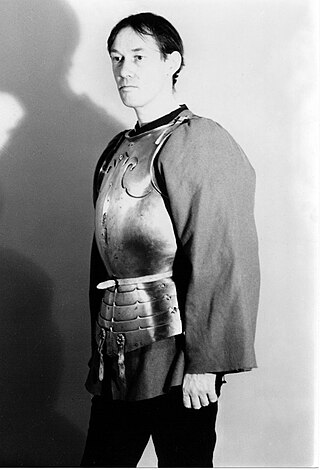Breastplate
Type of armor that protects the front of the torso From Wikipedia, the free encyclopedia
A breastplate or chestplate is a device worn over the torso to protect it from injury, as an item of religious significance, or as an item of status.

European
Summarize
Perspective
In medieval weaponry, the breastplate is the front portion of plate armour covering the torso. It has been a military mainstay since ancient times and was usually made of leather, bronze or iron in antiquity. By around 1000 AD, solid plates had fallen out of use in Europe and knights of the period were wearing mail in the form of a hauberk over a padded tunic.[1] Plates protecting the torso reappeared in the 1220s as plates directly attached to a knightly garment known as the surcoat.[2][1] Around 1250 this developed into the coat of plates which continued to be in use for about a century.[3][1] True breastplates reappear in Europe in 1340 first composed of wrought iron and later of steel. These early breastplates were made of several plates and only covered the upper torso with the lower torso not being protected by plate until the development of the fauld around 1370.[4][2][5] They were between 1–2.5 mm (0.039–0.098 in) in thickness.[5] In order to prevent the wearer from being cut by their own armour, the design featured outward turned edges that also increased stiffness.[5] In some cases, further strength was added by a ridge running down through the centre of the plate.[5] The first evidence for one-piece breastplates is from an altarpiece in the Pistoia cathedral dated to 1365.[4] Complete, lightweight, one or two-piece breastplates were readily used by the first decade of the 15th century.[4][6] The French term pancier, which became English pauncher and German panzer, was also used.
Sometime between 1600 and 1650 a form of breastplate was developed that consisted of two plates in close contact.[7] This was meant to improve protection against bullets and has been described as duplex armour.[7]
Bullet-proof vests are the modern descendant of the breastplate.
Breastplate and helmet of the French Horse Carabinier, during the Bourbon Restoration (1816–1824)
New-made replicas of a 17th-century helmet, two breastplates, tassets, a halberd, and two military marching drums
Classical mythology
Both Zeus and Athena are sometimes depicted as wearing a goatskin shield or breastplate called an Aegis. At the center of Athena’s shield was the head of Medusa.
Asian
The 14th century Majapahit Empire manufactured breastplate, called karambalangan. The most notable people using this type of breastplate is Gajah Mada, which is reported by Sundanese patih as wearing golden embossed karambalangan, armed with gold-layered spear, and with a shield full of diamond decoration.[8][9] In Kidung Sunda canto 2 stanza 85 it is explained that the mantris (ministers or officers) of Gajah Mada wore armor in the form of chain mail or breastplate with gold decoration and dressed in yellow attire.[10]: 103
Bible
According to the biblical Book of Exodus, a "breastplate" or "breastpiece" was among the clothes of the Jewish High Priest. It was a folded-over cloth garment embedded with 12 different gemstones, each inscribed with the name of a tribe of Israel.[11]
In both the Hebrew Bible and the New Testament, the word 'breastplate' is used figuratively to describe protecting oneself from unrighteousness.[12]
North American


The hair-pipe breastplates of 19th-century Interior Plains people were made from the West Indian conch, brought to New York docks as ballast and then traded to Native Americans of the upper Missouri River. Their popularity spread rapidly after their invention by the Comanche in 1854. They were too fragile and expensive to be considered armour, and were instead a symbol of wealth during the economic depression among Plains Indians after the buffalo were almost exterminated.[13]
Drag breast plate

This is a silicone or similar type of plastic vest or torso-plate that is placed over the male performer's chest, to mimic a woman's breast or cleavage. They are usually in a colour that matches the performer's own skin or to match an associated costume.[14]
See also
Citations
References
External links
Wikiwand - on
Seamless Wikipedia browsing. On steroids.


